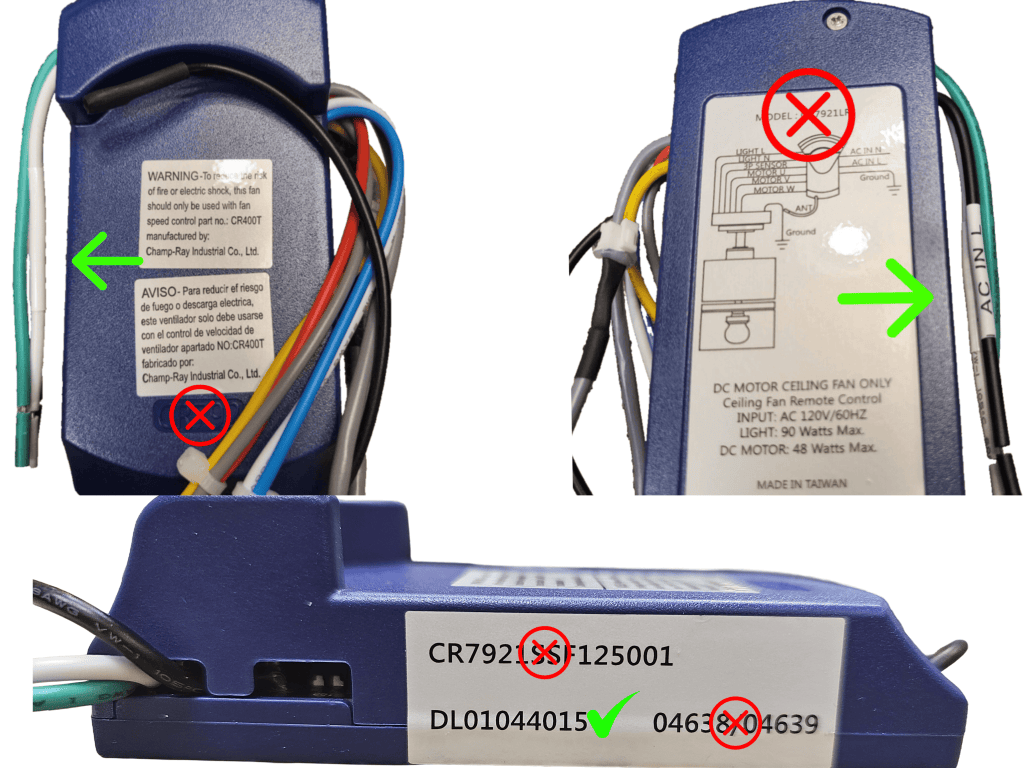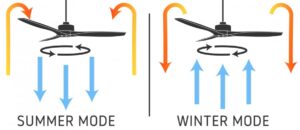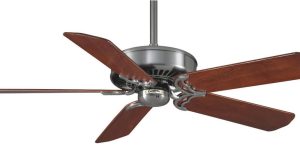Free shipping for all orders over $500+
Navigating the world of DC receivers
Navigating the world of DC receivers
In the world of DC ceiling fans, no two receivers are the same! Here are some tips and tricks that can help you identify what receiver you need!
How to Identify a DC Ceiling Fan Receiver
When it comes to modern ceiling fans, DC motors are a popular choice because they’re energy efficient, quiet, and provide strong airflow with precise speed control. But behind the scenes, there’s an important component that makes the whole system work: the DC ceiling fan receiver.
The receiver acts like the “brain” of your fan, translating signals from your remote or wall control into commands for the motor and lights. If a fan stops responding or the electronics fail, consult your manual for reprogramming instructions. If you’re still having issues, replacing the receiver is often the solution. The tricky part? Not all receivers are the same, and choosing the wrong one can leave you with a fan that won’t run at all. Keep in mind, box-store brands can be very difficult to find replacement parts for. We do sell new fans with easily replaceable parts. If you find yourself struggling with big box store support, Call Fan Man Lighting for a quick education, fans that will last and top tier customer service.
Here’s what you need to know about identifying DC ceiling fan receivers and finding the correct replacement.
Why Proper Identification Matters
Unlike older AC ceiling fan receivers, DC versions are not universal. Each fan is paired with a receiver specifically programmed to work with its motor. Using the wrong receiver can:
- Prevent the fan from operating at all.
- Cause incorrect speeds or light malfunctions.
- Potentially damage the motor or void warranties.
That’s why it’s so important to match your fan with the exact receiver model it requires.
Where to Find the Model Number
Most DC ceiling fan receivers have multiple numbers on their labels, which can get confusing. Here’s how to narrow it down:
- Look for the main model or part number.
This is typically confused for a code such as CR7921, UC7067, or YKDC86. Most receivers will use these numbers in one way or another. These are the identifiers parts suppliers and manufacturers use. The model number will usually start with a couple letters followed by a fairly long string of numbers - Ignore extra factory codes.
Receivers often have FCC IDs, manufacturing batch numbers, or unrelated factory codes. While they look official, they’re not useful for ordering replacements. - Check the fan housing.
- In many fans, the receiver is tucked into the canopy (the part against the ceiling).
- Some models place it inside the switch housing at the bottom of the fan.
- Take a clear photo.
Because numbers are often small and can rub off, snapping a photo of the label helps when cross-referencing later.
Common Mistakes When Identifying Receivers
- Assuming DC receivers are “universal.” Unlike some AC models, there is no true universal DC receiver. Each fan requires its own.
- Ordering based on looks. Two receivers may appear identical in size and color but still be programmed differently.
Tips for Ordering the Right Replacement
- Write down every number from the receiver’s label before searching.
- Cross-check the part number against your fan’s model and serial number (usually found on a gold or silver tag inside the motor housing).
- Contact the manufacturer or Fan Man Lighting to confirm compatibility.
- If possible, provide both the receiver number and the fan’s model information when ordering.
Frequently Asked Questions About DC Ceiling Fan Receivers
- What if I can’t find the model number on my receiver?
Check the fan’s motor housing for its model and serial number. We can often match the correct receiver from brands we carry using that information. - Can I use a universal receiver with my DC ceiling fan?
No. DC ceiling fan receivers are not universal. Each one is programmed for a specific motor and remote pairing. - Why does my receiver have multiple numbers on it?
Receivers often list factory codes, FCC IDs, and batch numbers. - Can I upgrade to a different receiver for more features?
In most cases, no. DC receivers are designed specifically for the motor they control. Using a different receiver could damage the fan. - Do DC ceiling fan receivers go bad often?
They can fail over time due to power surges, overheating, or simple wear. Fortunately, replacing a receiver is usually more affordable than replacing the whole fan. - I bought the right receiver, but I don’t have any function from my Ceiling Fan:
Please consult your Ceiling Fan’s instruction manual for proper remote/receiver pairing instructions. Each Ceiling Fan has a unique pairing process typically involving turning power off, back on and holding a specific button or button combination.
Final Thoughts
Your DC ceiling fan’s receiver is a vital part of its performance, and identifying the correct one is key to keeping your fan running smoothly. Remember:
- DC receivers are not interchangeable.
- Only the true model/part number matters when ordering.
- When in doubt, work with a professional at Fan Man Lighting to confirm you’ve got the right part.
At Fan Man Lighting, we specialize in helping homeowners track down the exact parts they need from DC receivers to vintage Casablanca components. If you’re struggling to identify your receiver, bring in or call us with your fan’s information or a photo of the part, and we’ll help you get it running again. If you don’t see the receiver you need on our website call us at 952-683-9450 and we will special order the proper receiver!

Share This :
Search
Recent Post
The Difference Between 3 Blade and Multi-Blade
July 30, 2025

How To Tell Which Direction To Run Your Ceiling Fan
December 22, 2022

Finding Model and Serial Number for Casablanca Ceiling Fans
December 14, 2022
